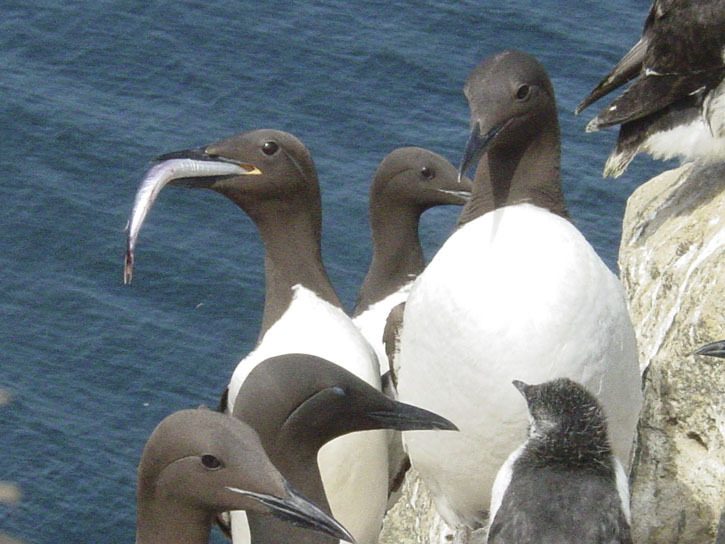By Russel Barsh and Madrona Murphy
Special to the Islands’ Weekly
We owe much of the islands’ wealth of salmon, seabirds and marine mammals to a fish so small and unappetizing to humans that its importance is often overlooked. Sand lances (Ammodytes hexapterus) are pencil-thin, silvery, and so oily that many old-timers called them “candlefish,” like eulachon farther north. In spring, sand lances form schools of hundreds of thousands in many of our bays, where we have found that they comprise about three-fourths (by weight) of the prey of juvenile Chinook salmon. Sand lances are also the most popular prey for Rhinoceros auklets, Tufted puffins, and other alcid birds in spring and summer when they nest and raise their young on offshore rocks and islets.
The key role of sand lance in the islands’ marine food web is due to a number of factors. Sand lances appear in nearshore habitats at the same time that seabirds nest and migrating juvenile Chinook and Coho salmon arrive for the summer. They convert tiny plankton such as copepods into much larger, oily, calorie-rich fish. Their narrow tubular profile makes it easy for sand lance to be swallowed by fish that are not much larger; a four-inch juvenile salmon can swallow a sand lance that is nearly three inches long.
Despite their recognition by scientists as “cornerstone prey,” Washington State acknowledges that “the life history and population biology of sand lances in Puget Sound is unknown.”
We do know that sand lances burrow into coarse sand at night, presumably to evade predators. Sand lances have been observed spawning on sandy to gravelly beaches during high tides from November to February, leaving their fertilized eggs to incubate for about four weeks. Tiny larval sand lances are found in the plankton floating between the islands from January to March. By May or June, we see large schools of sand lances at our long-term study sites in Watmough Bight and Cowlitz Bay, with fish from months to years in age. They may remain until late September.
One puzzle is the size of sand lance schools, which seems disproportionate to the small numbers of eggs found scattered on islands’ beaches. It is possible that surveys for sand lance eggs have missed important habitats such as coarse gravel and pebbles, which are more difficult to sample than sand. Do sand lances congregate in the islands from a larger area or deeper waters? In 2006, a University of Washington underwater camera recorded large numbers of sand lances in “sand waves” (imagine underwater sand dunes) around the islands. It remains unclear whether spawning occurs in sand waves, however. Sand waves may simply be used as refuge habitat by adult sand lances.
Another puzzle is whether sand lances aggregate each year in the same bays—and whether they consistently prefer particular bays such as Watmough and Cowlitz, where a number of predators also congregate. Fidelity to particular bays could be due to rich food resources, or relative safety from more voracious predators patrolling deeper waters. The fact that we find juvenile and adult sand lances schooling together in shallow water is a clue. Most other fish we see seasonally in island bays come in schools of either adults or juveniles, not a mixture of age classes.
Do sand lances feed in shallow bays in daytime and return to deepwater habitats at night, or do they relocate to shallow water for the entire summer? Once again, we do not know.
Further research is needed before we know how to ensure a future supply of sand lances for salmon and seabirds. At Kwiáht we plan to begin tracing the movements of sand lances using a combination of tagging, acoustic tracking, observations by divers and population genotyping, working with local volunteers on Lopez and Waldron. Check our Facebook page for fieldwork schedules and come see sand lances and juvenile salmon on the beach at Watmough Bight.




